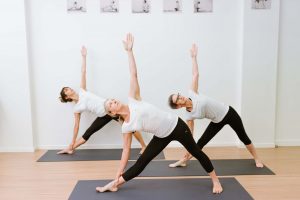Yoga today has become a mainstream activity for people seeking an accessible tool for long term health and vitality. It is practiced by more than 300 million people globally from ages ranging from primary school students through to those in their 80s and even 90s. And while there are now many interesting styles of yoga, the traditional method requires only a mat, a few props, a quiet space and time to practice. But what if you don’t know anything about yoga? Where do you start?
Beginning yoga is an exciting journey and many yoga teachers will confirm how much joy they receive from teaching people who are new to this ancient craft. Students learning yoga is like watching wonderful stories unfold as they start to experience what their bodies and minds are capable of achieving. Within a few short months of starting yoga students who had complained of having no flexibility find themselves doing their first ever Salamba Sarvangasana (shoulder stand) or Sirsasana (headstand). So their perspective on what it is possible is entirely turned around.
However it is important for anyone starting yoga to learn how to approach the physical postures correctly so as to experience the benefits that are achieved by working consistently and with effort while avoiding injury. That is why new students are encouraged to attend classes for beginners under the guidance of experienced teachers. Students learn to ‘wake up’ to what their bodies are telling them; to ‘sense and feel’ what happens when they apply themselves rather than just doing a pose. They are also encouraged to extend themselves – to go beyond the limitations they have created in their own minds. As B.K.S. Iyengar wrote in Light on Life – “the challenge of yoga is go beyond our limits – within reason. We continually expand the frame of the mind by using the canvas of the body. It is as if you were to stretch a canvas more and create a larger surface for a painting. But we must respect the present form of our body. If we pull too fast or too much at once, we will rip the canvas.”
So what are the benefits of starting yoga and is it for everyone?
There are many other benefits of yoga, all of which assist in transforming people’s lives if they are willing to put in the effort. And, yes, yoga is for everyone – just ask anyone who practices and they will explain why!
